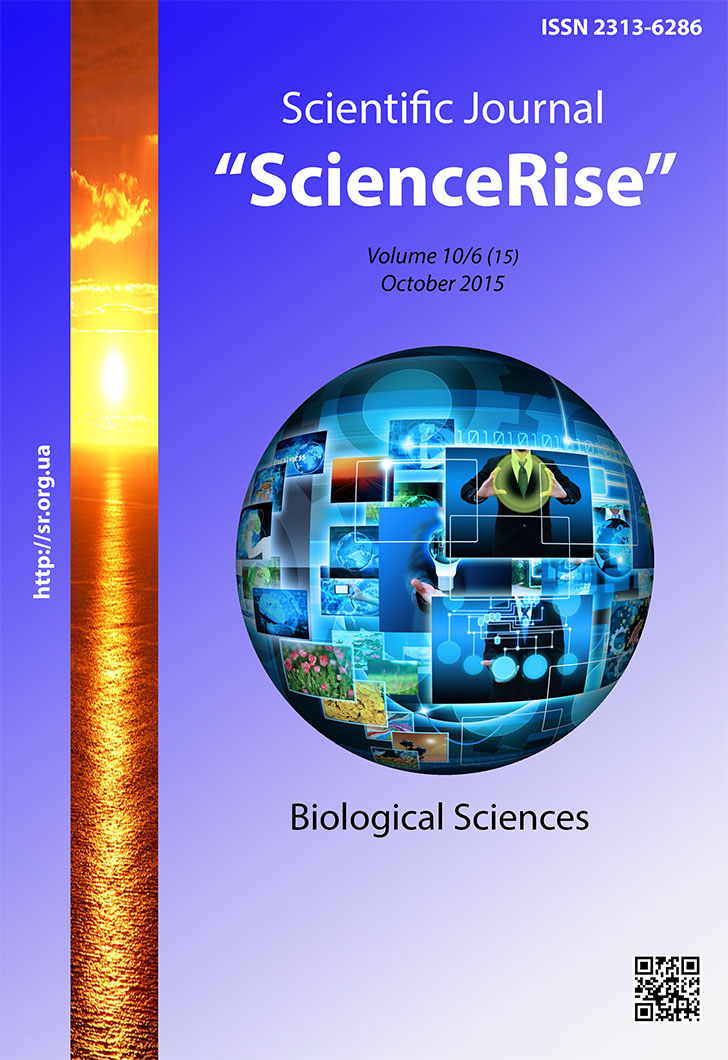Carcinogenic and non-carcinogenic risk from consuming of edible macromycetes growing in an ecological conditions of olevsk district
DOI:
https://doi.org/10.15587/2313-8416.2015.51471Słowa kluczowe:
heavy metals, macromycetes, environmental safety, carcinogenic risk, non-carcinogenic riskAbstrakt
It was ascertained that the mycological products growing within the natural ecosystem zones in Zhytomyr Region, in particular the Olevsk district thereof, are considered to be ecologically hazardous, and its consumption by people might result in escalation of both carcinogenic and not carcinogenic health hazardsBibliografia
Bilyavskyj, Yu. A., Myslyva, T. M. (2014). Quality monitoring of edible macromycetes growing in an ecological conditions of Zhytomyr Polissia region. Visnyk ZhNAEU, 1 (2), 3–12.
Collin-Hansen, C., Yttri, K. E., Andersen, R. A., Berthelsen, B. O., Steinnes, E. (2002). Mushrooms from two metal-contaminated areas in Norway: occurrence of metals and metallothionein-like proteins. Geochemistry: Exploration, Environment, Analysis, 2 (2), 121–130. doi: 10.1144/1467-787302-015
Pérez, A. A., Farías, S. S., Strobl, A. M., Pérez, L. B., López, C. M., Piñeiro, A. et. al (2007). Levels of essential and toxic elements in Porphyra columbina and Ulva sp. from San Jorge Gulf, Patagonia Argentina. Science of The Total Environment, 376 (1-3), 51–59. doi: 10.1016/j.scitotenv.2006.11.013
Campos, J. A., Tejera, N. A., Sánchez, C. J. (2009). Substrate role in the accumulation of heavy metals in sporocarps of wild fungi. BioMetals, 22 (5), 835–841. doi: 10.1007/s10534-009-9230-7
Elekes, C. C., Busuioc, G., Ionita, G. (2010). The bioaccumulation of some heavy metals in the fruiting body of wild growing. Notulae Botanicae Horti Agrobotanici Cluj-Napoca, 38 (2), 147–151. Available at: http://www.notulaebotanicae.ro/index.php/nbha/article/viewFile/4736/4526
Ita, B. N., Essien, J. P., Ebong, G. A. (2006). Heavy metal levels in fruiting bodies of edible and non-edible mushrooms from the Niger Delta Region of Nigeria. Journal of Agriculture & Social Sciences, 2 (2), 84–87. Available at: http://www.researchgate.net/publication/242074037_Heavy_Metal_Levels_in_Fruiting_Bodies_of_Edible_and_Non-edible_Mushrooms_from_the_Niger_Delta_Region_of_Nigeria
Muhsin, K., Afyon, A., Yağız, D. (2007). Minor element and heavy metal contents of wild growing and edible mushrooms from western black sea region of Тurkey. Fresenius Environmental Bulletin, 16 (11a), 1359–1362. Available at: http://www.psp-parlar.de/pdf/F_27_012_Original_Paper_pp1359_1362.pdf
Nekos, А. N., Rukavychka, О. О. (2008). Osoblyvosti nakopychennya vazhkyh metaliv u systemi «gryb – lisova pidstylka – grunt» (na prykladi Dubrovytskogo rajonu Rivnenskoi oblasti). Ludyna tа dovkillya. Problemy neoekologii, 1-2, 54–61.
Gololobova, О. О., Tymko, L. V. (2011). Formuvannua ekologichnoi jakosti istivnyh grybiv v pryrodnyh landshaftah Zakarpattya. Ludyna tа dovkillya. Problemy neoekologii, 1-2, 140–148.
Orlov, О. О. (2003). Akumulacija 137Сs plodovymy tilamu makromitsetiv riznyh trofichnyh grup na sfagnovyh bolotah Ukrainskogo Polissya. Lisnytstvo і agrolisomelioratsia, 104, 13–23.
Orlov, О. О., Irklienko, S. P., Тurkо, V. М., Кurbet, Т. V. (1999). Vplyv trofichnoi tа topichnoi grup openka spravzhnogo (Armillariella mellea (Fr.) Karst.) nа intensyvnist akumulacii 137Cs u plodovyh tilah. Visnyk DAEU, 1-2, 11–22.
Vinichuk, M. (2012). Selected Metals in Various Fractions of Soil and Fungi in a Swedish Forest. ISRN Ecology, 2012, 1–7. doi: 10.5402/2012/521582
Onishchenko, G. G., Novikov, S. М., Rahmanin, Yu. А. et. al; Rahmanina, Yu. А., Onishchenka, G. G. (Eds.) (2002). Osnovy otsenki riska dlya zdorovja naseleniya pri vozdejstvii himicheskih veshchestv, zagryaznyaushchih okruzhayushchuyu sredu. Мoscow, 408.
##submission.downloads##
Opublikowane
Numer
Dział
Licencja
Copyright (c) 2015 Tamara Myslyva, Yurij Bilyavskyj, Petro Nadtochij

Utwór dostępny jest na licencji Creative Commons Uznanie autorstwa 4.0 Międzynarodowe.
Our journal abides by the Creative Commons CC BY copyright rights and permissions for open access journals.
Authors, who are published in this journal, agree to the following conditions:
1. The authors reserve the right to authorship of the work and pass the first publication right of this work to the journal under the terms of a Creative Commons CC BY, which allows others to freely distribute the published research with the obligatory reference to the authors of the original work and the first publication of the work in this journal.
2. The authors have the right to conclude separate supplement agreements that relate to non-exclusive work distribution in the form in which it has been published by the journal (for example, to upload the work to the online storage of the journal or publish it as part of a monograph), provided that the reference to the first publication of the work in this journal is included.

